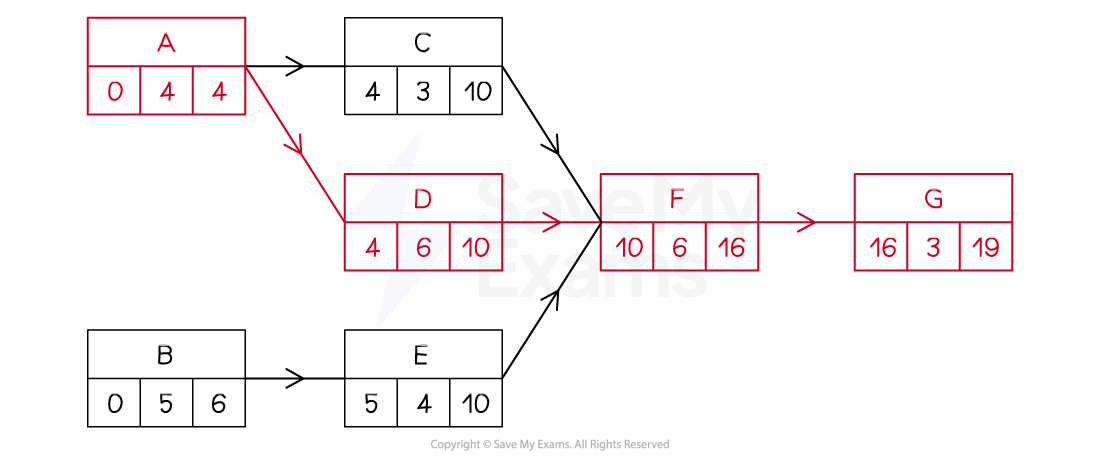Critical Activities & Critical Paths (AQA Level 3 Mathematical Studies (Core Maths)): Revision Note
Exam code: 1350
Critical Activities & Critical Paths
What is a critical activity?
In a project, some activities may be critical
Any delay to a critical activity will delay the entire project
Other activities in a project are not critical
There is some slack in the timing of a non-critical activity, it can be delayed without without delaying the entire project
Any slack time available is described by the float of an activity
float = latest finish time - earliest start time - duration of activity
If the float of an activity is equal to 0, it is a critical activity
If the float of an activity is greater than 0, it is not a critical activity
The float of an non-critical activity is the length of time it can be delayed for without delaying the entire project
What is a critical path?
A path through a network consisting only of critical activities is known as a critical path
Each activity on the critical path has a float of 0
The length of the critical path is the minimum duration of the entire project
E.g. In the diagram below the critical path, A-D-F-G, is highlighted

Worked Example
An activity network is drawn for a new project and is shown below.

(a) Find the total float for activity F.
Answer:
The float of an activity is found by subtracting the earliest start time and the duration of the activity from the latest finish time
Float = 19 - 6 - 4 = 9
Float of F: 9
(b) Identify the critical path.
Answer:
Activities A, C, G, I and K all have no float so are critical activities
Critical path: A-C-G-I-K
(c) State the length of the minimum duration of the project.
Answer:
The length of the minimum duration of the project is the length of the critical path
Minimum duration of the project: 28

Unlock more, it's free!
Did this page help you?